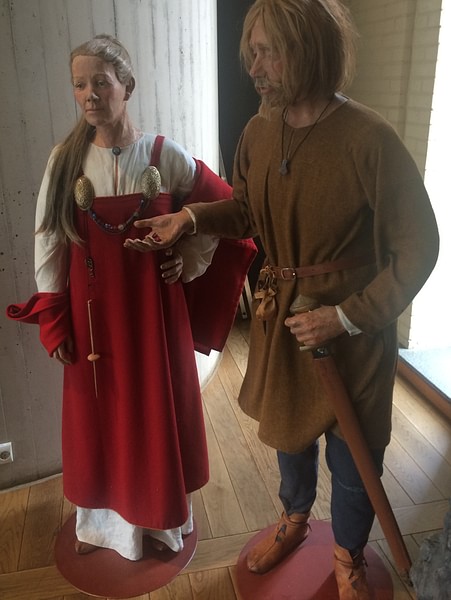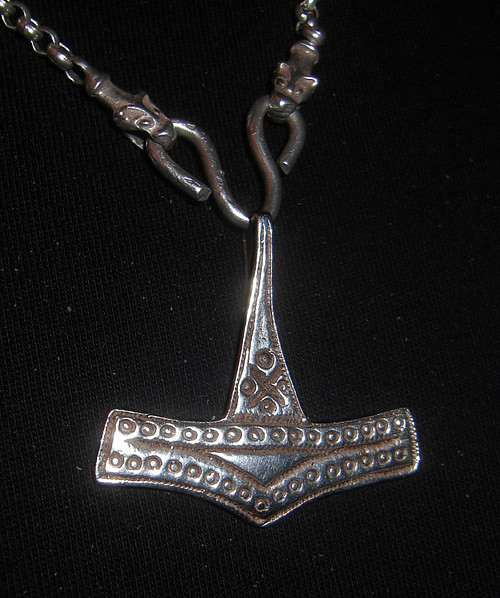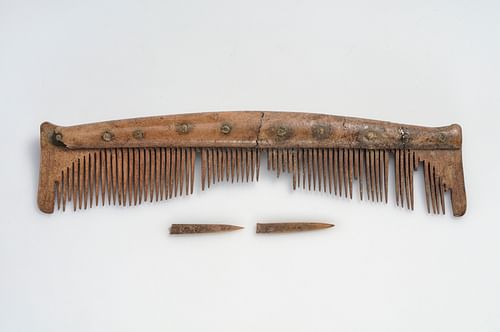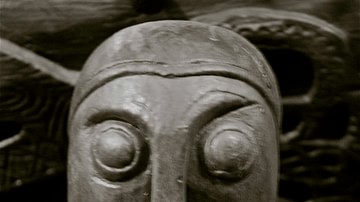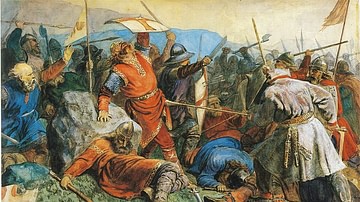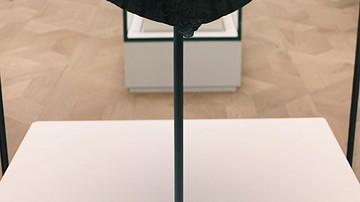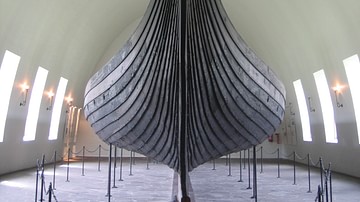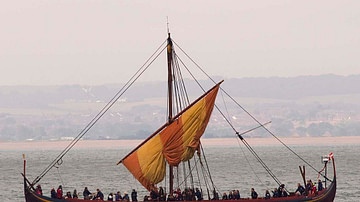Although the Vikings are routinely depicted as rough, grimy, and violent, they were actually quite refined, took personal hygiene seriously, and wore fine clothes ornamented by jewelry. Some Christian chroniclers who condemned the Vikings also note their fine clothing and attention to personal appearance.
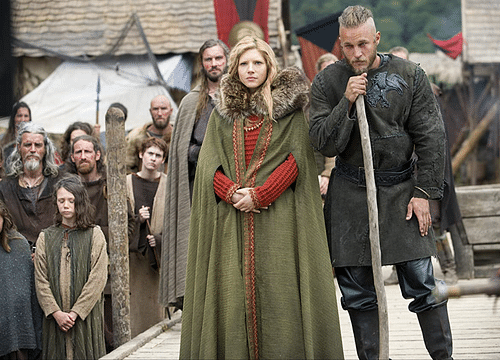
Viking clothing was made of wool, linen, and animal hides, and for the wealthy, silk. Combs – which it seemed almost every Viking carried – were carved from antler, bone, ivory, and wood and often kept in their own cases. Jewelry of the upper class was fashioned from silver, gold, gemstones, and polished glass, but the lower class adorned themselves within their limits as well, using tin, lead, iron, and possibly copper. Shoes and boots were made of animal hide and without heels. Except for slaves, generally speaking, Scandinavians were well-dressed and took great pride in their personal appearance. They began each morning with a personal hygiene regimen, and Saturday was set aside for bathing and washing clothes; a practice the Anglo-Saxon chroniclers found both strange and objectionable.
Vikings were Scandinavians (though not all Scandinavians were Vikings), and their emphasis on being well-groomed and dressed reflected the value of the larger culture. It has been suggested that the concept of Fate played a part in this as one never knew the day of one’s death and so should always look one’s best for the inevitable arrival in the afterlife. Norse poetry, notably the Hávamál and Reginsmál, emphasize the importance of beginning the day "combed and washed" as there was no telling where one might be by evening or even if one would still be among the living.
The soul of the departed was thought to arrive at one of the various afterlife destinations looking as one had in life. The heroes of Valhalla, for example, have their same armor and weaponry as when they died. Dressing and grooming oneself daily ensured one would not have to be ashamed in the presence of the gods and souls that had gone before and also had cosmic significance in maintaining order and staving off the cataclysm of Ragnarök that would end the world.
Sources on Viking Clothes, Hygiene, & Jewelry
Information on Viking clothes comes from archaeological evidence, artistic representations, and works written by their enemies. Scholar Kirsten Wolf comments:
Two kinds of evidence may be distinguished [in determining what Viking Age Scandinavians wore]. One comprises scraps of cloth that have been preserved through contact with brooches, and these fragments provide information about the types of fabric used. Moreover, the placement of the brooches, which were used primarily as dress fasteners, on a fully clothed corpse offer hints about the designs and cuts of the clothes. The other consists of contemporary figurative art, such as the Gotlandic picture stones erected between the fifth and the eleventh century, figure pendants, and the tapestry found in the Oseberg ship-burial. (100-101)
Grave goods have provided some of the most interesting evidence of Viking fashion in that women were buried with a significant amount of jewelry which included brooches that held their cloak or tunic in place. Since textiles can be preserved through contact with metals, pieces of cloth have been found that suggest the kind of clothing worn and even how it was worn. Female fashion is better attested than that of males in grave goods as many men were cremated. Some of the Gotland picture stones also provide insight into Norse fashion such as the one depicting Odin arriving in the afterlife which shows female and male attire.
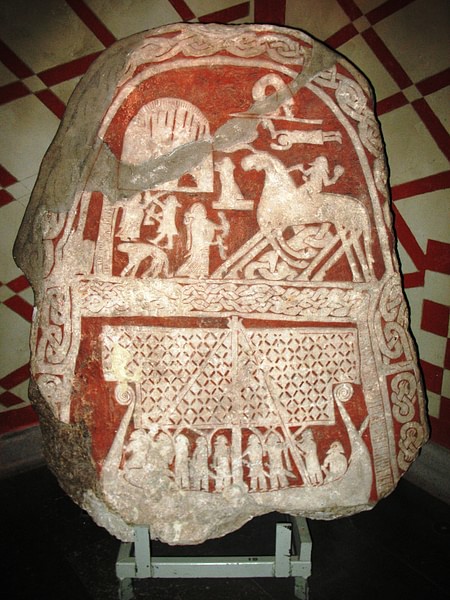
The Viking reputation for being well-groomed comes from Christian accounts condemning such behavior as vain posturing which seduced Christians into emulating pagan ways and so angering God. After the Viking sack of the monastery of Lindisfarne in 793, the scholar Alcuin (d. c. 804) wrote a number of letters to English kings denouncing those Christians who had begun dressing and caring for themselves as the pagan Vikings did since this had obviously incurred God’s wrath. The Viking raids in Britain, he claimed, were a punishment from God for the people’s sin of self-care apparent in their emulation of the Vikings:
Consider the dress, the way of wearing the hair, the luxurious habits of the princes and people. Look at your trimming of the beard and hair, in which you have wished to resemble the pagans. Are you not menaced by terror of them whose fashion you wished to follow? (Somerville & McDonald, 187)
Christian writings routinely demonize the Vikings but periodically let slip the Christian resentment for the better-groomed – and sweeter-smelling – Scandinavian invaders. Scholar Magnus Magnusson cites the 13th-century English chronicler John of Wallingford’s famous passage in which he justifies the massacre of the Danes in 1002:
The Danes made themselves too acceptable to English women by their elegant manners and their care of their person. They combed their hair every day, bathed every Saturday, and even changed their garments often. They set off their persons by many such frivolous devices. In this manner, they laid siege to the virtue of the married women and persuaded the daughters, even of the nobles, to be their concubines. (135)
The English resentment of the newcomers certainly was not solely due to the Vikings’ better grooming and hygienic habits, but these added to the tensions in Britain since, as Magnusson observes, the Viking custom of "taking baths and changing their underwear gave them an unfair advantage over their Anglo-Saxon rivals for the affections of the local maidens" (135). Viking hygiene was only one aspect of their attraction, however, as they also paid careful attention to their clothing and accessories.
Men’s Clothing
The Vikings wore their clothes in layers beginning with underwear of linen. Men (and women) are thought to have worn an undershirt and possibly under breeches, but this is more of an assumption as there is no actual evidence for undergarments. The next layer was a knee-length tunic and trousers. There seem to have been two types of these, a loose-fitting and a more form-fitting top and bottom. A belt was worn around the waist from which a knife and purse were sometimes suspended as well as other personal items, such as charms. The tunic was bloused above the belt and fell to mid-thigh.
Scandinavian society was divided into three classes:
- Jarls – aristocracy
- Karls – the lower class
- Thralls – slaves
The outfit described above would have been the basic daily wear of a jarl or karl. A jarl would then accessorize with a cloak, sometimes fur-lined or bordered with silk. Coats, jackets, and cloaks were sometimes embroidered with gold or silver thread. A karl might wear a woolen jacket over the outer shirt and both classes would have worn some form of jewelry, most often necklaces and armbands, and headpieces, which served to keep their hair in place. Thralls wore only a woolen knee-length tunic clasped at the waist by a belt or rope.
There were two types of shoes – soled and hide – the soled were made by stitching one kind of animal hide to a rougher sole, while the hide shoe was a single piece stitched to itself. The hide shoe was more like a very thick sock one slipped on and tied above the ankle with lacing. Boots were usually soled shoes and were made from cowhide and deerskin.
Women’s Clothing
Women’s clothing was less varied than men’s but also consisted of layers beginning with an undergarment of wool or linen. Upper-class women would have worn a linen chemise, either sleeved or sleeveless, with a dress over it suspended by straps over the shoulders. Dresses were worn loose or more form-fitting depending on how they were arranged on a woman and how tightly clasped. The dress was wrapped around the woman and held in place by a brooch or brooches which dictated how it draped the figure. Wolf comments:
From one of these brooches, usually the right, textile implements like scissors, tweezers, an awl, or a needle case might hang on straps, and between the brooches festoons of beads might be suspended sometimes with the addition of amber or silver pendants. Around the waist a belt was worn with knife and purse and, if the woman was a housekeeper, keys to the meal or treasury chest. Married women might also wear a tall headdress or a scarf around their hair. (104)
Both men and women favored headwear of three basic types: a peaked hat, a close-fitting wool cap, and a fillet (headband) of metal. Hooded cloaks were also popular with the upper class as were sleeved cloaks and shawls held in place by an ornate brooch. Women’s headgear seems to have been more elaborate but, again, this is difficult to substantiate since, as noted, more female jewelry as grave goods have been preserved and so there is less male headgear to compare it with. The most famous piece of Viking headgear – the horned helmet – was either used only in ceremonies or was a construct of Christian chroniclers. Viking helmets had no horns and no wings as such ornamentation would have been impractical in battle.
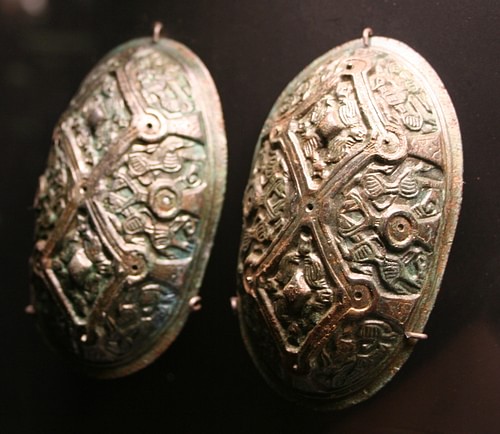
Women, like men, wore both soled and hide footwear, sometimes decorated, and also favored neckwear more elaborate than those worn by men. Women’s necklaces were often made of polished beads or gemstones but could also be of silver or gold. Men’s neckwear was often simpler, sometimes glass beads surrounding an amulet of Thor’s hammer or some other talisman.
Jewelry
Norse jewelry was varied and worn by both sexes. Among the items favored were neck rings, necklaces, bracelets, finger and toe rings, armrings, earrings, amulets and pendants, armbands, beads, and brooches. Wolf comments on the popularity, and necessity, of the brooch:
Brooches were what one may call obligatory jewelry in that they had a function in the costumes as fasteners. Many brooches have been found ranging from individualized items of precious metals to mass produced items of base and inexpensive materials. The latter were sometimes gilded to give them the appearance of gold and silver. The domed, oval brooches used by women to fasten their dresses are the most common. Worn in pairs, they are usually 10-12 cm (3.9-4.7 in.) long with bold relief decoration and sometimes ornamented with filigree. The ornament is typically a kind of "gripping beast" decoration. (105)
Neck rings were typically worn by men and were made by metal rods twisted together sometimes supporting a gem, amulet, or pendant while women’s necklaces, as noted, were more elaborate. Finger rings differed between the sexes only in size as did armrings, although both armrings and armbands (thicker arm rings) also seem to have held ceremonial and social significance.
The Norse armring was essentially a wallet. It was designed to be easily bent and a piece broken off to be offered in trade for goods and services. The arm ring also served to mark the transition of a boy to a man or as a gift from someone of higher social status to a subordinate. An example of this is the figure of King Hrothgar in Beowulf who is known as a "ring-giver" – a generous lord who bestows gifts freely on those who please him.
One of the most popular pieces of jewelry, besides the brooch, was the pendant which took many forms. Pendants usually honored the gods and so could take the form of a throne, of a horse in honor of Odin’s steed Sleipnir, different weapons associated with deities, and the most popular of all, Thor’s hammer Mjölnir. Thor’s hammer as a pendant was understood not only as a protective amulet against threats but a source of personal strength one could draw on in navigating one’s way through life.
Fate & Personal Appearance
In Norse belief, one’s fate was decided at birth, but what one did between birth and death was entirely up to the individual. In the Völuspá from the Poetic Edda, the seeress describes the Norns (Fates) who live in the roots of the World Tree Yggdrasil by the Well of Urd and weave the destinies of all living things:
Three wise women
Live there,
By that well
Under that tree.
Urth is named one,
Another is Verthandi,
The third is named Skuld.
They carve men’s fates,
They determine destiny’s laws,
They choose the lifespan
Of every human child
And how each life will end.(Verse 20, Crawford, 6)
The individual had no way of knowing what the Fates had decided and so the best course was to live each day as if it were the last. One aspect of living well was attention to personal appearance, encouraged by passages in Norse poetry like the Hávamál and Reginsmál. Both works have verses specifically admonishing an audience to care for their appearance before leaving home in the morning:
Every man should
Keep himself well-kempt and clean,
And eat up in the morning.
You never know
Where you’ll be in the evening,
So it’s bad to leave home hungry.(Reginsmál, 25; Crawford 240)
You should always go out
With your hair combed
And a meal in your belly,
Even if you can’t afford good clothes.
You should not be ashamed
Of your shoes and pants
Nor of your horse,
Even if it’s not a good one.(Hávamál, 61; Crawford 28)
The importance of one’s appearance in daily life is emphasized in both verses, but self-care in grooming also had cosmic significance in that one’s individual efforts helped maintain the collective order of the Nine Realms of Norse cosmology. Humans lived in only one of these nine realms which would all be destroyed at Ragnarök, the Twilight of the Gods, when the forces of chaos would break their bonds and face the gods in a final battle.
At the beginning of Ragnarök, the great wolf Fenrir howls outside the gates of Hel, and his sister provides him with an army of the dead to fight against the gods. This army is brought to the battlefield by the ship Naglfar which is made of the fingernails (and possibly toenails) of the dead. The ship cannot sail until it is complete and cannot be completed until it has enough human nails. Trimming one’s nails was understood as contributing to universal order because, if one died with unkempt nails, one brought Naglfar one step closer to completion.
Conclusion
Vikings, and Scandinavians in general, understood they were living in the last days because the first sign of the coming of Ragnarök – the death of the god Baldr – had already occurred. One’s individual fate – as well as the collective fate of the Nine Realms – had already been sealed by the Norns and so the best one could do was enjoy life as much as possible and this included appearing well-dressed. Although some articles of clothing were left with their natural pigmentation, many were dyed bright colors such as blue (from woad), green (from woad and a yellow substance), purple (from lichen and woad), red (from madder), and yellow (possibly from onion skins) as well as other colors such as brown from mixing walnut shells with other elements.
Although Vikings are routinely imagined as bloodthirsty savages rampaging through terrified towns and cities (which they certainly did do), they were actually far more cultivated and cultured than the chroniclers responsible for that reputation. Bathing and personal hygiene was not a Christian value as it was associated with pagan practices. Alcuin’s charge against those Christians emulating Viking fashion was not the only one as a number of Christian scribes, before and after the Viking Age, denounce personal hygiene as vanity.
To the Vikings, however, the Christians were the savages who clearly failed to grasp the importance of bathing, laundering clothing, and looking one’s best. Reports on finds in Viking tombs often emphasize the weaponry, but it is far more common to find implements in graves associated with grooming such as tweezers, combs, toothpicks, and washing bowls. The Vikings epitomized the concept of "dress for success" and wore it well even though this aspect of the culture has been largely ignored in modern-day representations.
